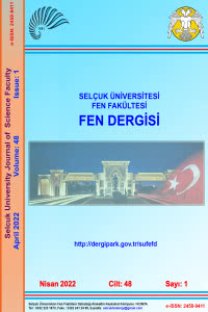Uzaktan Algılama ve Coğrafi Bilgi Sistemleri Kullanarak Zanjan Şehrinin Genişlemesinin Uzun Dönemli Takibi
MONITORING THE LONG TERM URBAN EXPANSION OF ZANJAN CITY USING REMOTE SENSING AND GEOGRAPHIC INFORMATION SYSTEMS
___
- Alsharif, A. A., B. Pradhan, 2014, "Urban Sprawl Analysis of Tripoli Metropolitan City (Libya) using Remote Sensing Data and Multivariate Logistic Regression Model", Journal of the Indian Society of Remote Sensing, Vol. 42(1), pp. 149-163.
- Azimi, N., Azadeh S., Roodbzani M. Z., 2013, "Geographic Analysis of Urban Patterns in Iran", Urban Studies (7). [In Persian]
- Bagheri, B., NedaeeTousi, S., 2017, An Explanation of Urban Sprawl Phenomenon in Shiraz Metropolitan Area (SMA), Cities, [In persian]
- Burton, E., Jenks M., Williams K., 2003, The Compact City: A Sustainable Urban Form, Routledge.
- Burton, E., Jenks, M., Williams K., 2013, Achieving Sustainable Urban Form, Routledge.
- Deka, J., Tripathi O. P., Khan M. L., 2010, "Urban Growth Trend Analysis using Shannon Entropy Approach–A Case Study in North-East India", International Journal of Geomatics and Geosciences, Vol. 2(4), pp. 1072-1078.
- Deng, X., Huang, J., Rozelle, S., Uchida, E., 2008, “Growth, Population and Industrialization, and Urban Land Expansion of China”, Journal of Urban Economics, Vol. 63(1), pp. 96-115.
- Ebrahimzadeh, R., (2009). "An analysis of Marvdasht's spatial spatial expansion pattern using Shannon and Hellendan entropy models and presenting its desirable future development pattern." Human Geography Research 42 (69):123-138.
- Garau, P., Sclar, E., Carolini, G. Y., 2005, A Home in the City, Earthscan.
- Hess, G., Daley, S. S., Dennison, B. K., Lubkin, S. R., McGuinn, R. P., Morin, V. Z., Potter, K. M., Savage, R. E., Shelton W. G., Snow C. M., 2001, "Just What is Sprawl, Anyway", Carolina Planning, Vol. 26(2), pp. 11-26.
- HojatSheikhi, T. P., Rezaei, M.R., Sajadi, M., 2012, "Analyzing and Determining the Physical Form of Isfahan City by using the Gary and Moran Model." [InPersian].
- Jaeger, J. A., Bertiller, R., Schwick C., Kienast F., 2010, "Suitability Criteria for Measures of Urban Sprawl", Ecological Indicators, Vol. 10(2), pp. 397-406.
- Karami A., Feghhi, J., 2012, “Comparison and Comparison of Land use of North and South Zagros Lands with the Land Surface Ecology Approach (Case study: Provinces and KohgiluyehBavar Ahmad), Land Application, Vol. 4 (6), pp. 34-5[In Persian].
- Lungo, M. 2001, “Urban Sprawl and Land Regulation in Latin America", Land Lines, Vol. 13(2), pp. 91-113.
- Lynch, K., 1984, Good City Form, MIT press.
- Yeh, A. G.-O., Li., X. 2001, "Measurement and Monitoring of Urban Sprawl in a Rapidly Growing Region Using Entropy", Photogrammetric Engineering and Remote Sensing, Vol. 67, pp. 83-90.
- Zhang, T. 2000, "Land Market Forces and Government's Role in Sprawl: The Case of China." Cities, Vol. 17(2), pp. 123-135.
- ISSN: 2147-9364
- Yayın Aralığı: Yılda 2 Sayı
- Başlangıç: 2013
- Yayıncı: Selçuk Üniversitesi Mühendislik Fakültesi
COMPARISON OF TOPSIS AND VIKOR MULTI CRITERIA DECISION ANALYSIS TECHNIQUES
DEVELOPMENT OF 3D WEB GIS APPLICATION WITH OPEN SOURCE LIBRARY
MUHAMMED OĞUZHAN METE, DOĞUŞ GÜLER, Tahsin YOMRALIOĞLU
PROTECTION OF PERSONAL DATA: EXAMPLE OF GEOGRAPHIC INFORMATION SYSTEMS
SPECIAL MAP BASE OF MILITARY GEOINFORMATION SYSTEM
Ilgar MUSAYEV, Magsad GOJAMANOV
Mehri RAHIMI, Farhad HOSSEINALI
Kişisel Verilerin Korunması: Coğrafi Bilgi Sistemleri Örneği
Açık Kaynak Kodlu Kütüphane İle 3B Web CBS Uygulaması Geliştirilmesi
Muhammed Oğuzhan METE, Doğuş GÜLER, Tahsin YOMRALIOĞLU
Ilham MARDANOV, Mirnuh ISMAYILOV, Elina KARIMOVA, Stara TARIKHAZER
INDOOR SURVEYING WITH TERRESTRIAL PHOTOGRAMMETRY: A CASE STUDY FOR SIRCALI MASJID
Lütfiye KARASAKA, HAKAN KARABÖRK, HASAN BİLGEHAN MAKİNECİ, Atiye ONURLU, Gizem İŞLER
İç Anadolu Bölgesinde Mühendislik ve CBS Amaçlı Quasi-Geoid Belirlenmesi
Fariz MİKAİLSOY, Fatih SARI, Ekrem TUŞAT, Muzaffer KAHVECİ, Ferruh YILDIZ
